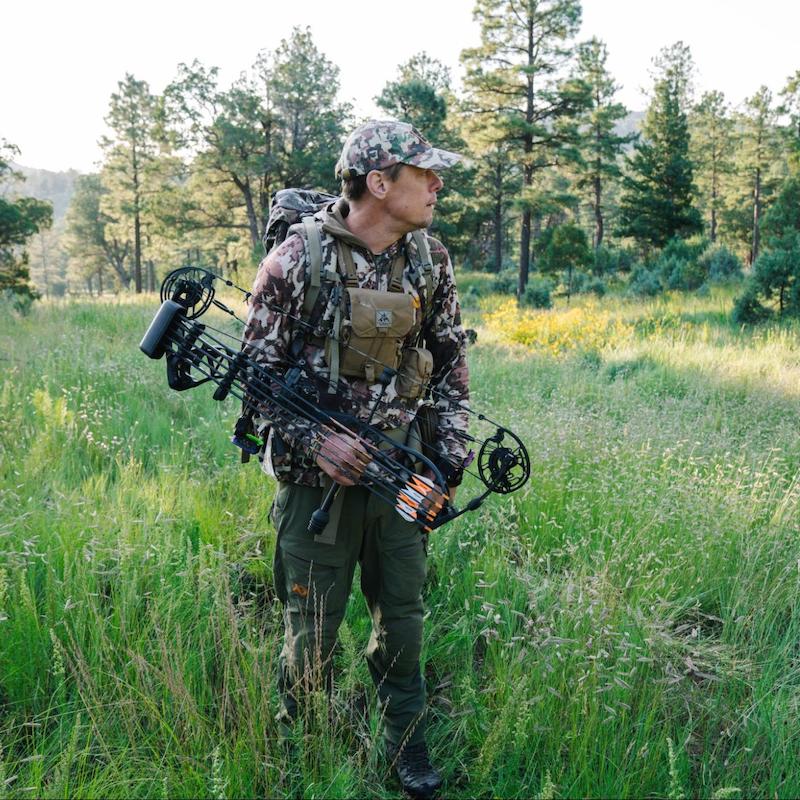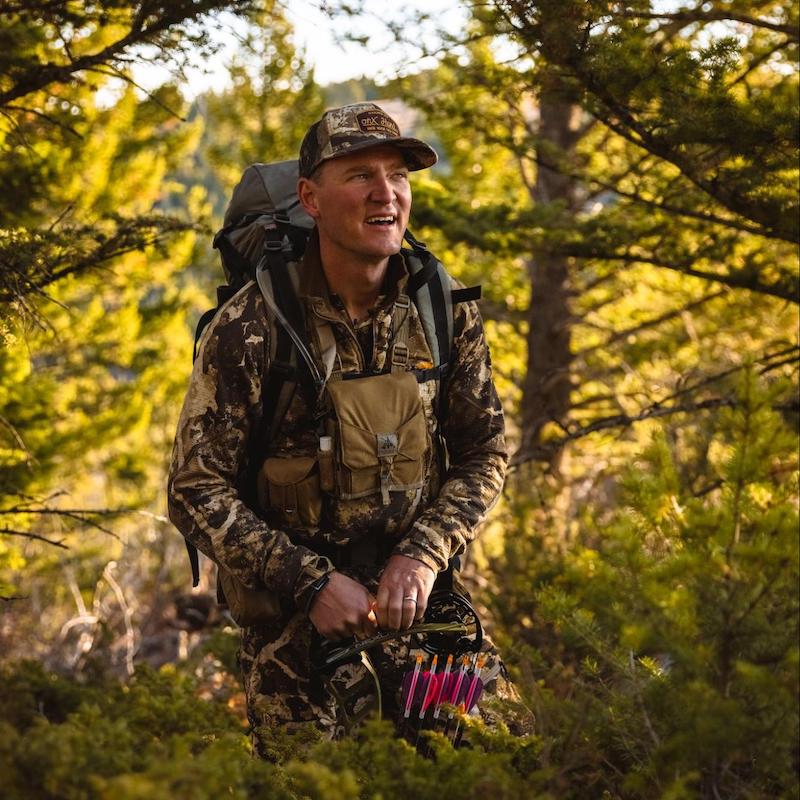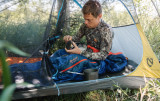
Ask a dozen bowhunters what the best hunting broadhead is, and you’ll likely get a dozen different answers.
From one-piece fixed heads to three-blade mechanicals to the hybrids that fall somewhere in between, dozens of broadheads saturate the market and make choosing the right model an overwhelming challenge. But with many years of bow kills under our belts, we’ve narrowed down the list to a few of the best options for just about any North American big game on any budget.
Jump to: The Hunting Broadheads We Use
What We Look for in a Good Hunting Broadhead
It’s easy to get sucked in by the marketing for the latest crop of broadheads that inevitably hit the shelves each year—outrageous cutting diameters, gimmicky features, and blood trail guarantees. But the best broadhead doesn’t necessarily have the flashiest name or the most aggressive-looking design. When evaluating a broadhead’s quiver potential, these criteria should top your list:
- Accuracy
- Penetration
- Sharpness
- Durability
We’re looking for a well-built broadhead that can stand up to bone, create a devastating wound channel, and ultimately result in a quick, ethical kill.
Jump to: What Makes a Good Hunting Broadhead
The Hunting Broadheads We Use
Our combined decades of bowhunting experience have helped us weed out the worst and push past the mediocre to tip our arrows with the best broadheads out there. We’ve put these to the test and can vouch for their top-notch performance.
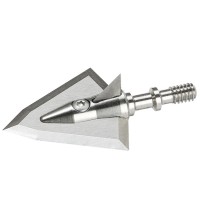 Iron Will S Series
Steve's Pick
|
 Tuffhead Evolution 2.0
Janis's Pick
|
 G5 Megameat Mark's Pick
|
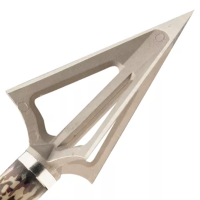 G5 Montec
Emily's Pick
|
|
|---|---|---|---|---|
| Highlight | Best for Elk | Best Penetration | Most Accurate | Best Budget |
| Material | A2 tool steel | S7 tool steel | Stainless steel | Stainless steel |
| Blade Thickness | .062 in. | .07 in. | .044 in. | .03 in. |
| Cutting Diameter | 1.0625 in. | 1.1875 in. | 2 in. | 1-1.125 in. |
| Weights | 100, 125, 150, 175, 200, 225, 250 | 125, 150, 200, 300 | 100, 125 | 85, 100, 125 |
| Price | $119.95* | $116.97* | $49.95* | $39.95* |
| Field Notes | Field Notes | Field Notes | Field Notes |
What Makes a Good Hunting Broadhead
While there might be a bit of give and take here, we’re generally looking for high marks in these categories when choosing a broadhead.
1. Accuracy
In a game of inches, accuracy is paramount. While it probably won’t fly exactly like a field point, a solid broadhead should be consistently accurate, even in variable conditions—and a mechanical should reliably deploy only on contact. Many manufacturers spin test their broadheads for trueness, but you can confirm your broadheads are up to par at home too.
2. Penetration
Pass-throughs typically lead to heavier blood trails and faster game expiration, so a broadhead that can penetrate through thick hide, vitals, and even bone is key to an effective setup. A cut-on-contact tip paired with the right strong, razor-sharp blades can result in deep penetration, even with lower-poundage rigs.
3. Sharpness
Sharper broadhead blades will cause more devastating blood loss than duller blades in the same amount of time. Because deer can travel fast and far even when fatally wounded, a razor-sharp broadhead—along with precision shot placement—will give you the best odds of recovery. Some broadheads allow for resharpening or replacing blades so you can keep them in prime condition.
4. Durability
A good broadhead should be constructed of durable materials and built strong enough to stand up to bone. While aluminum might be more lightweight, steel broadheads are typically much stronger and won’t bend as easily. Titanium typically boasts the best strength-to-weight ratio, but you’ll see that reflected in the price. Without weak points or moving parts, one-piece broadheads are generally the most reliably durable.
Mechanical vs. Fixed-Blade Broadheads
One of the most hotly contested issues among bowhunters is what type of broadhead is best mechanical or fixed. While most outdoorsmen will land firmly on one side of the debate, the reality is there’s no one right answer for every archer, quarry, and scenario.
Mechanical broadheads typically offer larger cutting diameters and fly more like field points. But this accuracy comes at a tradeoff in penetration. Fixed-blade broadheads, with more compact cutting diameters and no blades to deploy on impact, can more easily punch through hide and bone without bending or breaking.
For bowhunters with lower-poundage rigs or those chasing bigger-than-whitetail game, fixed-blade broadheads are usually the top choice. For those who want a more forgiving setup and big holes in bucks, mechanicals might be the way to go. But this is not a one-size-fits-all issue.
Field notes from the MeatEater Crew
Steve's Pick
Best for Elk
When Steve was on the hunt for a new elk broadhead, he turned to Jason Phelps, who he trusts "implicitly when it comes to elk gear." Phelps turned him on to Iron Will, so Steve spent some time with Bill Vanderheyden, the mechanical engineer who founded Iron Wil.
He recommends Iron Will’s S Series broadheads, which minimize wind effects and maximize big game penetration.
"They shot beautifully from my rig," Steve said. "The first thing I killed with them was a bull elk, taken with a full frontal shot. It took a few steps and died."
And the sharp, durable heads continue to live up to the hype for other species too.
"A couple of weeks ago, I ran one through the thick portions of a wild boar's skull, both front and back. The broadhead looked as good as new when I pulled it out."
Specifications
- Material: A2 tool steel
- Blade Thickness: .062 in.
- Cutting Diameter: 1.0625 in.
- Weights: 100, 125, 150, 175, 200, 225, 250
- Price: $119.95 for 3-pack
Janis’s Pick
Best Penetration
When bowhunting, Janis’s goal is a complete pass-through. That’s why his current go-to is the 200-grain Tuffhead Evolution 2.0.
"Its cut-on-contact, two-blade, single-bevel head requires minimal force to pass through the hide and has energy left to pass through the rest of the animal," he said. "If bone is encountered, the heavy weight, along with the single bevel will help it pass through that as well. The rotation caused by the single bevel as it moves through the vitals also doesn't hurt."
So far, Janis has killed a whitetail buck, two pigs, and a nilgai with these easy-to-sharpen heads, and all but the nilgai were complete pass-throughs.
"I shot the nilgai severely quartering away; the arrow passed through the entirety of its browse-filled guts and stomach, cut the top of the heart, split the lungs, and almost poked through the nilgai's one-inch thick hide on its chest. A solid three feet of penetration. I'll take that performance any day."
Specifications
- Material: S7 tool steel
- Blade Thickness: .07 in.
- Cutting Diameter: 1.1875 in.
- Weights: 125, 150, 200, 300
- Price: $116.97 for 3-pack
Mark's Pick
Most Accurate
A lot of broadheads are advertised to fly like field points, but the aerodynamics of the two are so different there’s bound to be a disparity. Enter the Megameat BMP.
Megameat BMPs (ballistic match points) are practice heads engineered to perfectly match the wind resistance and drag of the broadheads. So no dulling or wasting a new head at about $17 a pop just to make sure you’re dialed in.
"I'm a big fan of the accuracy you can achieve with a mechanical like this as well as the ballistic match point practice head these come along with that flies exactly like the broadhead," Mark said.
In the field, a snaplock collar on the Megameat broadhead keeps blades secure until impact for reliable accuracy. Both the collar and blades are replaceable, so you won’t be shelling out for a new pack after every hunt. A chisel tip to bust through bone and a two-inch cutting diameter don’t hurt either.
Specifications
- Material: Stainless steel
- Blade Thickness: .044 in.
- Cutting Diameter: 12 in.
- Weights: 100, 125
- Price: $49.95 for 3-pack
Emily’ Pick
Best Budget
My hunting rigs are set around 50 pounds with a 26-inch draw length, so I typically prefer fixed broadheads to maximize penetration. And the G5 Montecs are some of the best out there. These affordable heads are low-maintenance, dependable, and deadly.
The one-piece construction means no moving parts to tinker with, and the spin-tested heads cut on contact with diamond-cut sharpness. Similar to the Megameat, the Montec comes in both pre-season heads with rounded points and BMP practice points so you can save the real thing for the field.
G5 Montecs are the most budget-friendly broadheads on this list, plus you can resharpen the blades to extend their life and get even more bang for your buck.
Specifications
- Material: Stainless steel
- Blade Thickness: .03 in.
- Cutting Diameter: 1-1.125 in.
- Weights: 85, 100, 125
- Price: $39.95 for 3-pack

